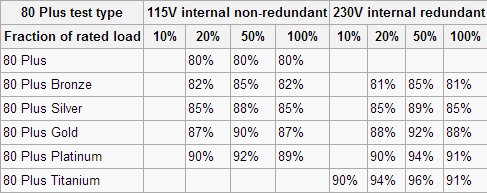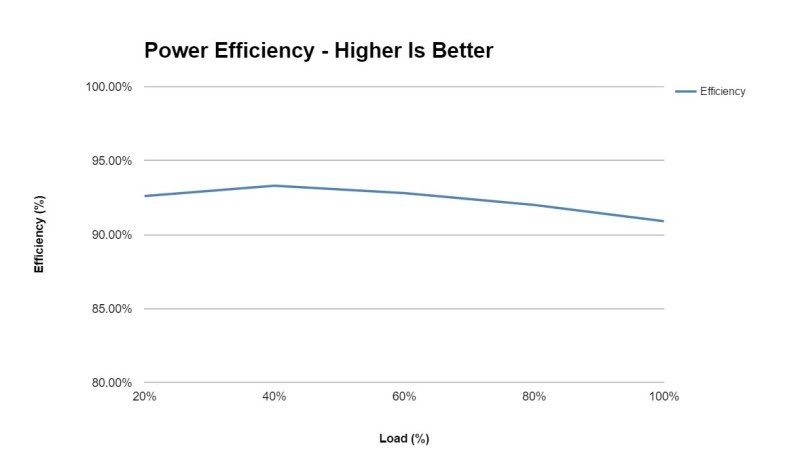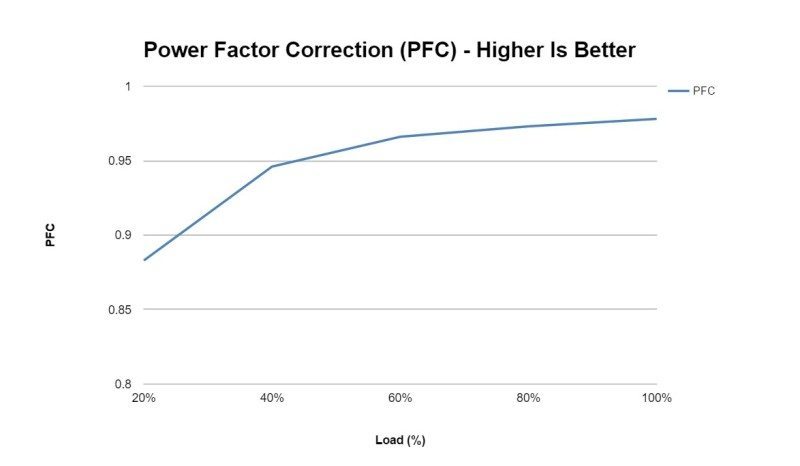XFX Pro850W Black Edition Fully Modular Power Supply Review
Peter Donnell / 9 years ago
Efficiency, PFC and Voltage Regulation
Voltage Regulation
To test voltage regulation we load the power supply to five different load scenarios that give an equal spread of load across every single rail. So that means 20% on all rails, 40% on all rails and so on. We then calculate the average deviance of each rail from its expected voltage.

Due to the limitations of our load tester, we had to split the 12v rail across multiple “simulated” rails. These results are very impressive, as there’s only a minor deviance from the rated specifications and they’re certainly closer than most PSUs manage. What’s even more impressive is how consistent the voltages are across multiple loads.
Power Efficiency
Power efficiency is measured by calculating actual supplied wattage divided by the wattage drawn at the wall/plug, multiplied by 100 to give a percentage. We then compare that to the particular 80 Plus certification the company claims to see if it meets that. You can see the 80 Plus certifications below, we always test 230v power supplies.


Considering this is an 80 Plus Gold rated unit, I wasn’t expecting to see Platinum levels of efficiency, but that’s exactly what we have! Even at 20% load it’s nearly on par with Titanium ratings and that already makes this PSU a big winner for those who want their PSU to be cost-effective.
Power Factor Correction
Power Factor Correction is the ratio of the real power flowing to the load, to the apparent power in the circuit. The aim of PFC is to make the load circuitry that is power factor corrected appear purely resistive (apparent power equal to real power). In this case, the voltage and current are in phase and the reactive power consumption is zero. The closer the number to one the better as this allows the most efficient delivery of electrical power (Source – Wikipedia).

Superb PFC across the whole range, performing a little above what I would have expected for a unit of this grade.



















